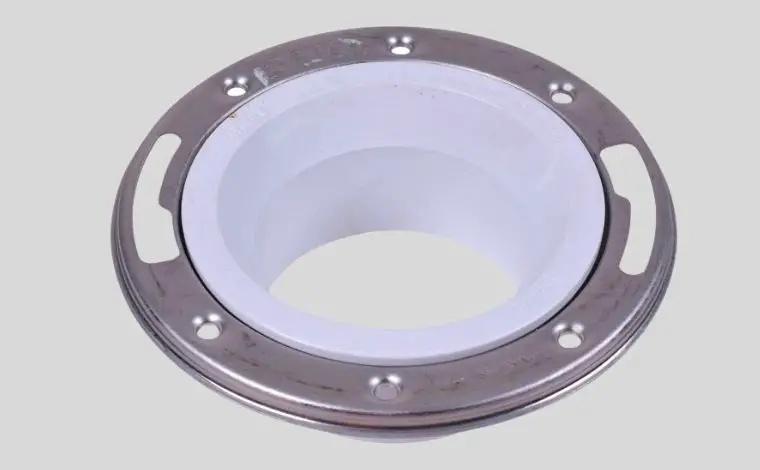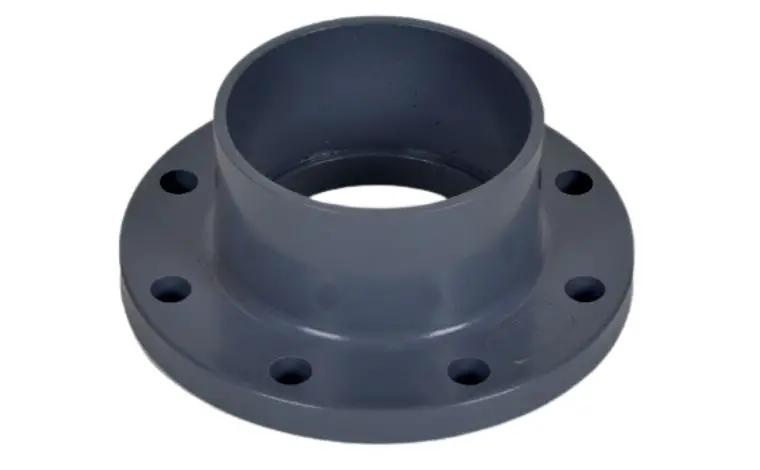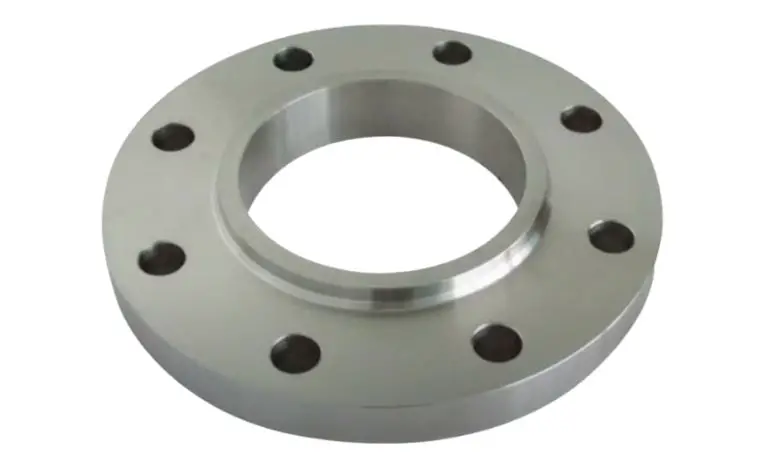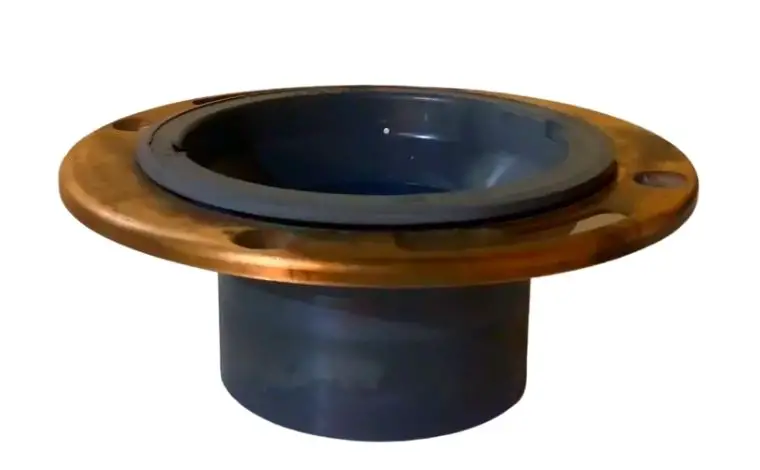The toilet is one of the crucial places in our daily life. There are many parts of a bathroom, including a commode, a toilet seat, a flushing system, pipes, flanges, etc. A toilet flange is an essential thing that is used in every bathroom. Extracting human waste is impossible without using a flange. This article will show you the definition of a toilet flange and the various flanges used in our toilets to extract waste. A toilet flange is a plumbing fitting. It is a pipe situated between the home drainage system through the floor and the toilet.
| Types of Toilet Flange | Durability | Chemical Composition |
| Cast Iron: | High | Pig/ore iron |
| PVC: | Low | Polyvinyl Chloride |
| Stainless Steel: | High | 11%+ chromium and SAE 304 stainless steel |
| Aluminum: | Medium | Aluminum, copper, zinc, and magnesium |
| Copper: | High | Copper-63 and copper-65 |
| Brass Metal: | High | Copper and zinc |
Different Types of Toilet Flanges and Their Uses
As a piece of essential toilet equipment, a flange is a popular item for every toilet. You can not buy or remove a flange without considering the quality. You have to judge the different flanges and choose the best one to use in your bathroom for a long time. There are several types of toilet flanges. Now, you will know about the varieties of the different flanges.
Stainless Steel Toilet Flanges
Do you desire to get your flange’s sustainability for years or decades? They consist of stainless steel and are hard and durable. These flanges are better than any other as they are corrosion and rust-proof toilet flanges. They make you tension-free, providing better sealing than Plastic (PVC) flanges. The stainless steel flanges are more expensive but quite incomparable to the others for long-lasting performance. Lightweight is another characteristic of stainless steel flanges.
Cast Iron Toilet Flanges
You must use cast iron flanges when your toilet includes cast iron pipes. The cast-iron lines are not suitable without the same kind of flanges.
The size of the cast iron toilet flanges makes them suitable for fitting. The drain pipes are underneath the subfloor. The cast iron flanges have longer shapes and can fit into the drain’s deeper position. So, it is helpful for efficient flushing of the toilet. It is a strong flange for bathroom fittings. It also comes in different sizes to fit the various types of toilets. But, one of cast iron’s significant problems is that it is likely to rust faster.
Plastic (PVC) Flanges
If you plan to change the toilet set, you can use plastic flanges. They are not so durable, but they are enough for use for about some years. The regular toilet flanges are 4”× 3”. But if the toilet is elongated, you can use the plastic flanges for setting with the commode. They have 7” top and 3 ½” bottom diameters. The extension kits will be attached to the large plastic flanges in the elongated toilet. 
The PVC flanges are at an affordable price. They are also lightweight and easy to fit with toilet pans. Especially when the size of the toilet pipes is extensive, the plastic flanges are the only alternative. You can use these flanges for an excellent experience with every toilet set.
Aluminum Flanges
The Corrosion-resistant aluminum flanges are as sustainable as the bathroom fittings. They are also lightweight and famous worldwide. The strong aluminum is renowned as a piece of excellent plumbing equipment. Although these flanges are sustainable and long-lasting, the other metal flanges are more rigid. 
There are both pure and composite aluminum flanges. The composite aluminum flanges are grazed with copper, zinc, and manganese. If you choose aluminum flanges, you have to take the pure ones. They are more sustainable for use. But, the composite aluminum flanges will lose hope as they can not perform well for a long time.
Copper Toilet Flanges
Antifungal and antibacterial copper can be your good item as a toilet flange. It can ensure your safety from attacking the bacteria. Copper is also rigid and durable. The corrosion-resistant feature added a new dimension to the flanges and made them appropriate to use for a long time.
Brass Toilet Flanges
If you notice the old bathrooms, you can find the brass flanges. Once, they were famous, but now they are not as popular as plastic, stainless steel, or aluminum. Brass flanges are less likely to be damaged as they are solid and durable. There is a problem with the brass flanges. The flanges are prone to rust, so you may face a problem after using these for a short time. 
All ranges and sizes of brass toilet flanges are suitable to fit with any toilet set. However, brass flanges are less popular because metal flanges are the alternatives to brass in this era.
Standard Size Toilet Flanges
Nowadays, we find that toilets in our society are of different sizes. So, the flanges must be like that. Can you imagine if there were only one dimension of the flanges? How could they set the different kinds of toilet pipes? Your answer will be the necessity of the various sizes of toilet flanges. When you divide the dimensions of the flanges, you will get three categories of items.
4 × 3 Inches Toilet Flanges
When a person wants to use a standard toilet and set a flange with it, he needs the 4 × 3 flanges. It is suitable for the maximum types of commodes. Even most hardware stores can provide you with these flanges. So, they are the most popular flanges to use with most toilet sets.
Do you know why the flange’s name is “4 × 3”? It is a diameter measurement of the upper and lower part of the flange for setting it in the appropriate place. The top of the flange can connect to the toilet, and the bottom part connects to the drain. The dimension defines that the top of the piece is 4 inches across, and the bottom is 3 inches.
There is a strong advantage of having 4 inches of toilet flanges. It provides an extra cleaning space for the commode pipes, ensuring more safety by removing the garbage from your toilet. The extra space is also necessary for removing the chance of seeping back the water through the wax ring.
3 Inches of Toilet Flanges
The 3 inches toilet flange defines the flange when the diameter of the upper and lower part is 3 inches. It is appropriate to use it with a 40-pipe that is 3 inches in diameter. The flange can not work with the different sizes of pipes. Sometimes, your 3 inches flange can not fit with your 40-size pipe. If you face a problem, you have to collect the different flange sizes.
When it is time to compare the 3 inches flanges with the 4 × 3 flanges, the 3 inches flanges are less available. The 4 × 3 inches are easy to get. But, when you need to choose a flange to fit the pipes, the 3 inches are incredibly more suitable.
There is a slight disadvantage of the 3 inches flange and its water pressure. As the pipe is smaller in dimension, the water flow can create more stress and create a problem rarely.
Non-Standard Toilet Flanges
Sometimes, the toilet flanges of accurate measurement are not appropriate for your toilet set. When The pipes of your toilet are of different diameters and made from different ingredients, they can not fit a specific size of flange. It may happen with the older home pipes, which are from different materials and do not give a specific size. This time you must choose the flange with the variation of size. It may be larger or smaller than the regular flanges and appropriate with the toilet set that you have in your bathroom.
How to Install A New Flange in A Toilet?
When you buy a sizable toilet flange with your commode, you must install it carefully. When you think about a plumber, it will be easier for you. But installing a flange is an easy process. If you know the process of installing a flange, you can set it yourself. Now, I am showing you the easiest way of installing a toilet flange.
- First, you will attach a new wax ring to your toilet floor.
- Now, set the flange under the toilet set to measure the flange connecting to the commode and drainpipe.
- Attach the flange with the wax ring.
- Put the toilet on the flange and the wax ring and check the line carefully.
- Tighten the nuts of the flange as they keep the toilet with the pipeline. Do not create any pressure; otherwise, the nuts will cut up.
- If your toilet has a tank, you have to place the tank on the top of the toilet.
- Tighten the screws of the tank and get a new toilet set placed in your bathroom.
Conclusion
Nowadays, we can not imagine a modern toilet without a flange. The various flanges are available for setting in your bathroom. The main caution in setting up a flange is to select the accurate size. When the flange is consistent with the drainage pipe, you will not get any leakage for a long time. But, the flange of larger shapes than the toilet and drainage pipe can affect the proper extraction of water. Moreover, metal flanges are more durable, and plastic flanges are suitable for all toilets. So, you need to select the flange with discretion.
Hi, this is Robert Crossan, the owner of this website, has 17 years of experience in the installation, maintenance, and repair of toilets and plumbing systems. After completing the Level 2 Basic Plumbing course in 2005, I started working in both domestic and commercial buildings as a professional plumber. So I can figure out the core difference between different toilet models and brands. It also helped me monitor their work performance and setbacks.